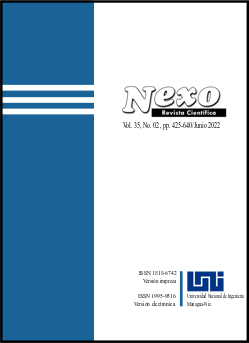Identify the Main Knowledge Streams of Technological Learning in Joint R&D Projects in Petroleum Industry Based on Co-Word Method
DOI:
https://doi.org/10.5377/nexo.v35i02.14641Keywords:
Technological learning, joint R&D projects, Knowledge map, text mining, clustering, co-word analysisAbstract
In this paper, to determine the main knowledge streams of technological learning in joint R&D (JRD) projects in petroleum industry, the co- word analysis method is used. The knowledge map is drawn by reviewing 388 papers published in the study area from 2000 to 2021 in Scopus and Sage databases using VOSviewer1.6.16 software. Accordingly, by reviewing the existing knowledge, the two main concepts of knowledge management and technological innovation are identified. Then, using text mining method and drawing a concept knowledge map, 8 clusters are extracted and their relationships are analyzed using Netdraw software. Finally, the study period from 2000 to 2021 is divided into three main categories: organizational - communication characteristics, economic goals and concepts of innovation, and shown the most focus in recent years is in the field of innovation concepts.
Downloads
1691
Downloads
Published
How to Cite
Issue
Section
License
Copyright (c) 2022 Universidad Nacional de Ingeniería

This work is licensed under a Creative Commons Attribution 4.0 International License.
The authors who publish in Nexo Scientific Journal agree to the following terms:
- Authors retain the copyright and grant the journal the right of the first publication under the license Creative Commons Attribution License, which allows others to share the work with a recognition of the authorship of the work and the initial publication in Nexo Scientific Journal.
- Authors may separately establish additional agreements for the non-exclusive distribution of the version of the work published in the journal (for example, in an institutional repository or a book), with the recognition of the initial publication in Nexo Scientific Journal.
- Authors are allowed and encouraged to disseminate their works electronically (for example, in institutional repositories or in their own website) before and during the submission process, as it can lead to productive exchanges, as well as earlier and greater citation of published works.










